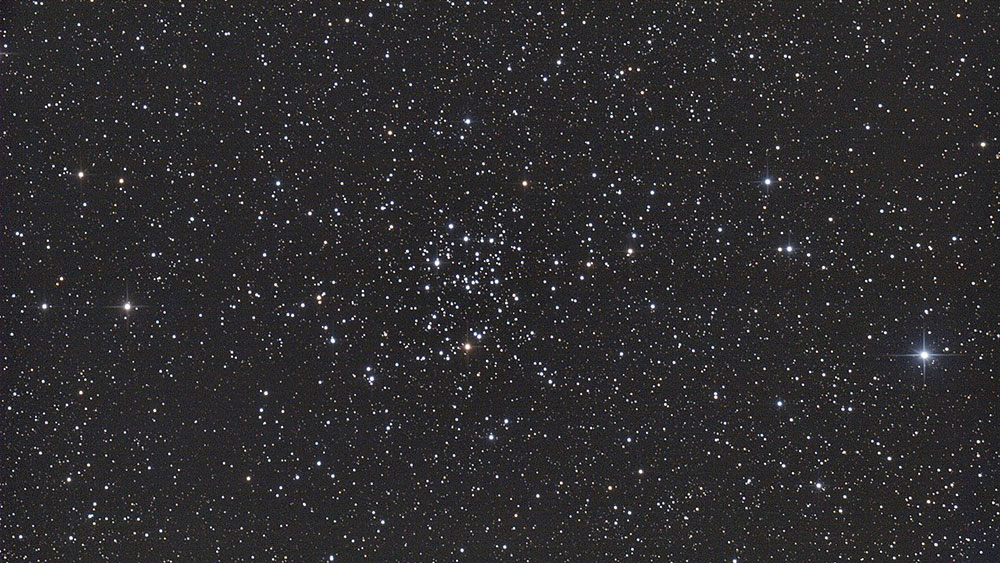NGC 2281 is an open star cluster in the constellation of Auriga. It’s best viewed during the late winter months into early spring. You see the central stars make a diamond shape. Also, one will notice a mix of red and blue stars, which makes this relatively unknown cluster of 30-40 stars a worthy find.ContinueContinue reading “NGC 2281: A Diamond in Auriga”
Tag Archives: Winter
Messier 35 (NGC 2168): A Young Cluster the Size of the Moon in Gemini
Messier 35, also known by the name the Show-buckle Cluster, is an open cluster in the constellation of Gemini. It’s best viewed in the winter months. With at least a pair of binoculars, most stargazers, including those living with urban light pollution, will be able to enjoy M35. The cluster is spread out. It takesContinueContinue reading “Messier 35 (NGC 2168): A Young Cluster the Size of the Moon in Gemini”
Messier 38 (NGC 1912): A Starfish Floating in an Ocean of Sky
Messier 38 is one of several beautiful and bright star clusters in the constellation Auriga. It’s also know as the Starfish Cluster as lines of brighter stars stretch out from the center.
Messier 45: Seven Diamonds in a Winter Mist
Messier 45 is an open star cluster in the constellation Taurus. It’s best viewed in winter and early spring. Also known as the Pleiades, or Seven Sisters, M45 is one of the nearest clusters to Earth and one of the brightest and most recognizable objects in the night sky, even from brighter suburban skies.
Messier 50 (NGC 2323): That’s an “M” for Monoceros! An Open Star Cluster in Monoceros
Messier 50 is an open star cluster in the constellation Monoceros. It’s best viewed in winter. Discovered by Giovanni Domenico Cassini in 1710, Messier 50 is part of the constellation Monoceros but lies near Canis Major. I’ve read various descriptions of the cluster over the years, including it looking like a “coil,” a “heart,” or,ContinueContinue reading “Messier 50 (NGC 2323): That’s an “M” for Monoceros! An Open Star Cluster in Monoceros”




